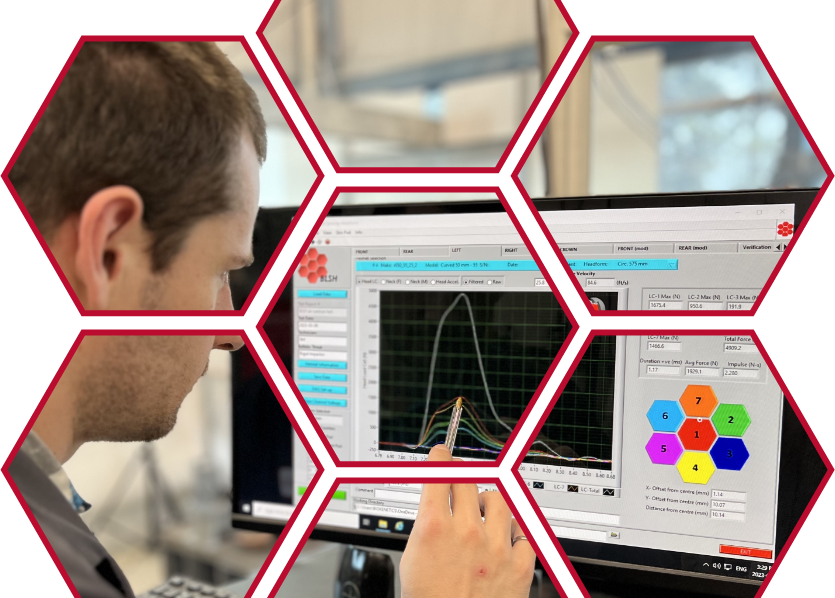With sports season well under way for both the NFL and the NHL, the world of professional athletics is once again reminded of the importance of the sturdy helmets and protective gear that lay beneath sleek branding and flashy jerseys. Player safety remains one of the most important concerns both on and off the field, and ensuring protective gear evolves to meet our current understanding of safety measures and avoidable hazards is essential to preventing devastating injuries.
Head trauma, broken bones, and spinal injuries are just a few of the major injuries prevented by using the right gear, and one of the biggest challenges facing the safety industry today is ensuring their products are up to the task of absorbing major blows on the field or ice. Below, well take a look how innovative and experimental sports research can help us better understand how protective gear can best be utilized to avoid harm. Read on to learn more.
Innovative Materials and Technology
Helmets and padding have come a long way from the earliest iterations seen on the professional sports circuit, but their work is far from done when it comes to reaching the next level of protection. Modern advanced technology and materials like carbon fibre, kevlar and specialized foam padding have help to transform the capabilities of helmets and pads to absorb a wider range of impacts with minimal damage transference to their wearer, with new materials and compounds being tested regularly to determine future viability. As capabilities and resources continue to expand as we develop new testing methods for understanding the full risks of certain impacts, technology and the use of better materials are sure to provide an even safer road forward.
Customization and Fit
One size doesn’t fit all when it comes to helmets and safety gear, and an increasing amount of studies and injury research showcase the importance of ensuring gear can be customized for the best fit possible. Helmets are now tailored to individual players’ head shapes and sizes, offering a snug and comfortable fit that provides optimal protection and stability. Similarly, body armour is now capable of being much more sculpted to meet operational or gender needs, allowing for better movement and comfort while still offering the necessary protection against violent impacts.
Improved Impact Testing
Impact testing lies at the heart of safety on the field; in order to ensure all equipment stands up to the dangers at hand, rigorous testing is essential. Such tests are designed to replicate real-world scenarios and assess a helmet’s performance under various conditions, including angular and rotational kinematics that are now recognized as contributors to concussions. While the base requirement for safety necessitates compliance with all regulatory standards for protective gear, experimental research is vital to creating a far greater understanding of possible injury prevention measures and effect on operational changes to game play where applicable.
Sensor Technology
The fairly recent integration of sensor technology has brought a new dimension to helmet safety and impact understanding in particular. Experimental and new to the market are mouth guards and helmets equipped with high tech sensors that are able to monitor impact forces during games and practices, highlighting objective data about the intensity and frequency of hits a player experiences. This data is now being used to review active safety protocols and evaluate training practices to avoid activities that may cause undue harm to the body.
Concussion Protocols
Concussions are one of, if not the most talked about head injury in the pro-sports field. Hard impacts can lead to serious concussion issues, as well as the potential for life-altering traumatic brain injuries. Most major sporting leagues have begun to take an aggressively proactive approach to reducing the severity of concussions by implementing the requirement of thorough evaluations before returning to play after a head injury and mandating the use of proven helmets throughout active play.
Alongside active medical protocols as mentioned above, there has also been an increasing focus on preventive education among teams and athletes, empowering players to take safety into their own hands by being mindful and actively engaged in reduction methods while playing.
Research and Collaboration
Advancements in helmet safety and protective sports equipment are more often than not, the direct byproduct of extensive research and evaluation conducted in trusted laboratory environments. At Biokinetics, we know that understanding the exact dangers present on field, having an accurate awareness of how to mitigate harm with current and evolving assets, and being able to constantly reassess as necessary is essential for driving safety forward in the sports industry.
Advances in safety are a result of collaborative efforts among researchers, sports medicine professionals, and helmet manufacturers. Ongoing research aims to enhance our understanding of head injuries and helmet technology. This research helps identify emerging risks and informs the development of improved protective gear. Collaboration ensures that the latest scientific findings are translated into practical solutions for players’ safety.
For over 45 years, we’ve proudly partnered with industries across North America, including the professional sports world to create a better understanding of risk mitigation through sports and equipment testing you can trust. Contact us today to learn how our services can help your team stay safe on the field.

